Technology
Leap Beyond: Elevating India’s Space Saga
India’s Stellar Journey
Posted On:
30 JUL 2025 10:19AM
“Space is not just a destination. It is a declaration of curiosity, courage, and collective progress. India’s space journey reflects this spirit. From launching a small rocket in 1963, to becoming the first nation to land near the South Pole of Moon, our journey has been remarkable.”–
Prime Minister Narendra Modi
30th July, 2025
Introduction
India’s space programme, spearheaded by the Indian Space Research Organisation (ISRO), has transformed the nation into a prominent power in global space exploration. From the historic launch of Aryabhata, India’s first satellite in 1975, the country has progressed to pioneering cost-effective satellite launches with the PSLV, delivering over 400 foreign satellites into orbit. The turning point for India's space program came in 2014 with the introduction of major space reforms. Under the leadership of the Prime Minister, the government initiated a series of policy changes aimed at opening up the space sector to private participation and international collaboration. These reforms were a game-changer, unlocking India's space potential and setting the stage for a quantum leap forward.
In line with India's space ambitions, the launch of NISAR (NASA-ISRO Synthetic Aperture Radar) is scheduled for July 30, 2025, at 17:40 hrs. This mission marks the first joint Earth observation collaboration between NASA and ISRO, set to launch aboard GSLV-F16, which will provide all-weather, day-night imaging of the Earth’s land and ice-covered surfaces.
Recently, with the success of the Axiom-4 Mission, India has taken a significant step forward in human spaceflight. It has also advanced its Gaganyaan ambitions by sending its first astronaut to the International Space Station to conduct pioneering scientific experiments in international collaboration. On July 15, The Prime Minister extended a welcome to Group Captain Shubhanshu Shukla on his return to Earth from his landmark mission aboard the International Space Station. The PM further added that as India’s first astronaut to have visited the International Space Station, Shubhanshu Shukla has inspired a billion dreams through his dedication, courage, and pioneering spirit.
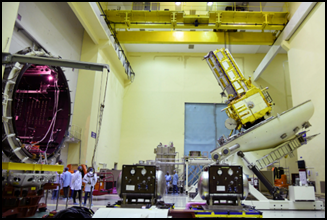
NISAR Instrument
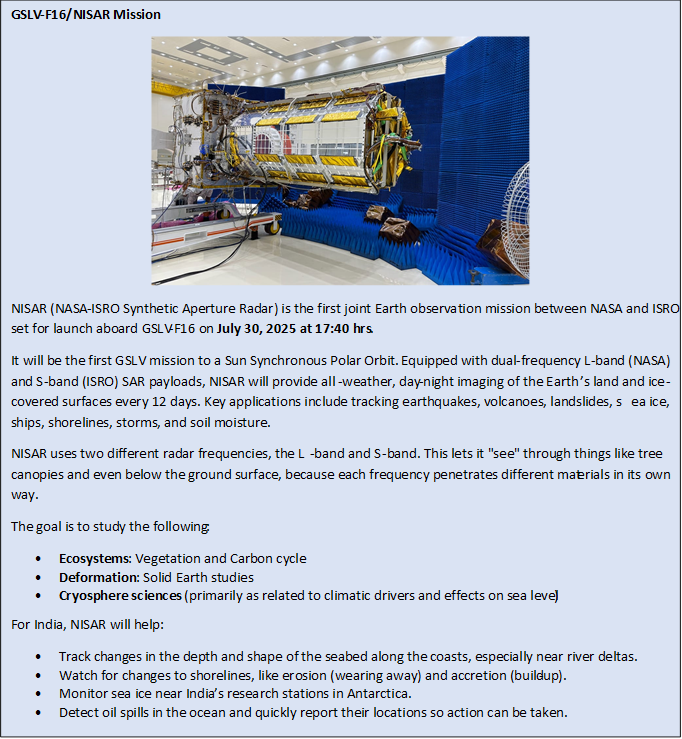
Landmark achievements include the Chandrayaan missions, Chandrayaan-1 confirming the presence of water molecule on the Moon & becoming India’s first deep space mission. Chandrayaan-3 made India the first country to land near the lunar south pole. The Mars Orbiter Mission (Mangalyaan), made India the first Asian nation to reach Martian orbit on its maiden attempt. The programme’s successes also extend to navigation (NAVIC), astrophysics (XPoSat), commercial launches, and ongoing human spaceflight ambitions with the Gaganyaan project. These advancements have been instrumental in bolstering India’s technological growth, scientific research, and global partnerships.
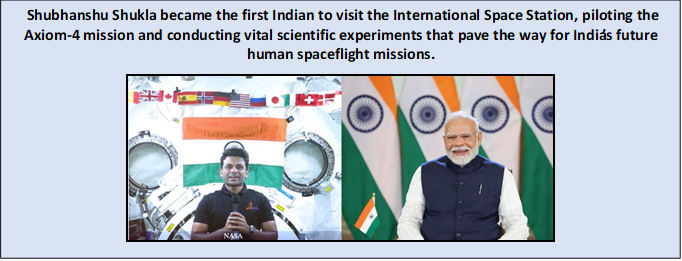
India’s Space Achievements
India’s space programme, led by the Indian Space Research Organisation (ISRO), is undergoing a transformation marked by bold ambitions, technological innovation, and increasing global collaboration.
Over 400 satellites for 34 nations have been launched on India’s launch vehicles.[1]
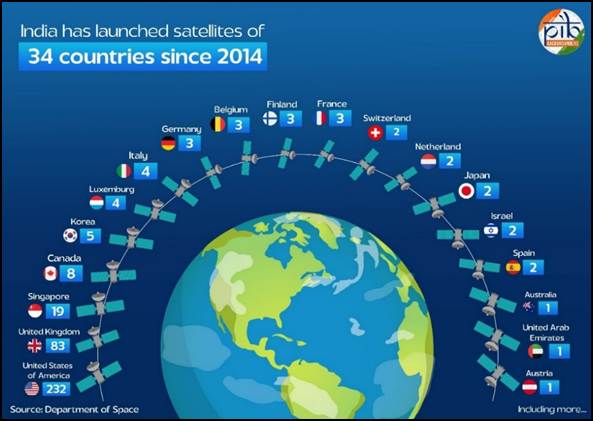
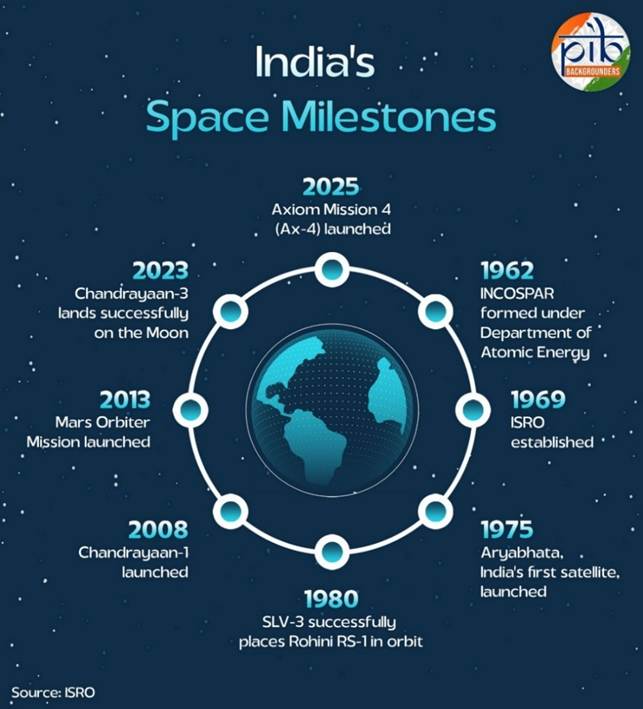
The Axiom-4 Mission
The Axiom Mission 4 has enabled human spaceflight for India, Poland, and Hungary, with each nation’s first government-sponsored flight in more than 40 years. While Ax-4 marks these countries' second human spaceflight mission in history, it is the first time all three nations executed a mission on board the International Space Station. This historic mission underscores how Axiom Space is redefining the pathway to low-Earth orbit and elevating national space programs globally.[2]
The successful completion of this mission marked a significant milestone in India’s space journey, strengthening its position in global space exploration and laying the groundwork for future ambitions such as the Gaganyaan programme and the development of the Bharatiya Antariksha Station. Group Captain Shukla, India’s astronaut and a part of the four-member Axiom-4 commercial crew mission, returned to Earth aboard the SpaceX Dragon capsule Grace, which splashed down in the Pacific Ocean off the coast of San Diego shortly after 3 PM IST on 15th July, after a 22.5-hour return journey following an 18-day stay aboard the International Space Station (ISS).
India’s Historic Human Spaceflight to the ISS
Launched on 25th June 2025, with Group Captain Shubhanshu Shukla as Mission Pilot, this mission marked the first instance of an Indian astronaut travelling to the International Space Station. This event signalled a new era in India’s space programme and offered a promising glimpse into the nation’s ambitions for future space exploration.
Experiments conducted during Axiom-4 Mission:
- Microalgae Study: The experiment on the impact of microgravity on three microalgae strains progresses steadily with periodic observations. It was set up on the ISS with artificial lighting.
- Sprouting Seeds in Space: The moong and methi seed sprouting experiment in microgravity, relevant for crew nutrition, has been successfully completed. Seeds sprouted via regular hydration and are now being readied for analysis.
- Indian Tardigrade Strain Study: Dormant tardigrades were revived as per protocol. Their survival and activity in microgravity were monitored. The experiment is complete, and samples are stored for further study.
- Metabolic Supplements on Muscle Regeneration (Myogenesis): The study on microgravity effects on human muscle cells and metabolic supplements is completed with regular interventions. Samples will be analyzed to understand muscle degradation and nutritional countermeasures.
- Cyanobacteria Growth Experiment: Growth of two cyanobacteria varieties in urea and nitrate media under microgravity is monitored. Harvested samples have returned for research on their life support and biotech roles in space.
- Human Interaction with Electronic Displays in Microgravity: Regular web tests were conducted on how microgravity affects human-machine interaction with electronic displays. Results will improve astronaut interface design and mission efficiency.
- Microgravity Impact on Food Crop Seeds Growth and Yield: Rice, cowpea, sesame, brinjal, and tomato seeds passively exposed to microgravity aboard ISS which have returned will be cultivated across generations to study inherited changes and adaptations from space exposure.
On July 15, post Shubhanshu Shukla’s return to Earth, the PM remarked that as India’s first astronaut to have journeyed to the ISS, Group Captain Shukla’s achievement marks a defining moment in the nation’s space exploration journey.
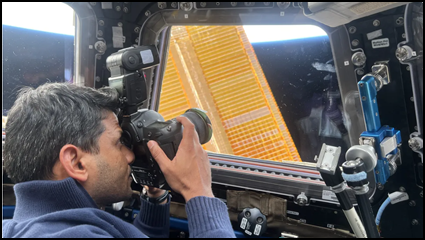
Inspiring Future Generations: Group Captain Shubhanshu Shukla’s mission stands as not just a personal triumph but also as a beacon of inspiration for India’s youth. igniting scientific curiosity, fostering a spirit of innovation, and encouraging future generations to pursue careers in science and technology.[3]
Gaganyaan Programme
The Gaganyaan Programme was approved with a financial outlay of approximately ₹20,193 crore. It is India’s first indigenous human spaceflight initiative. It aims to send Indian astronauts to Low Earth Orbit (LEO), laying the foundation for more advanced missions. The vision has since expanded to include the establishment of the Bharatiya Antariksh Station (BAS) by 2035 and an Indian crewed lunar landing by 2040.[4]
This investment supports key technology development activities and a total of eight planned missions, including both uncrewed and crewed flights. Four Indian Air Force test pilots have been selected and have completed their physical, psychological, and generic spaceflight training-
- Gp Capt. PB Nair
- Gp Capt. Ajit Krishnan
- Gp Capt. Angad Pratap
- Gp Capt. S Shukla
They are set to become India’s first astronauts in independent spaceflight, marking a new chapter in national scientific achievement. Before the crewed mission, three uncrewed test flights will take place, with first one scheduled for this year from Sriharikota. After successful testing, the crewed mission will follow. Additionally, astronauts will undergo rigorous physical and training modules to ensure mission readiness.
As of May 2025, the programme entered its final phase with the first human spaceflight now scheduled for the first quarter of 2027. Currently, the Human-rated LVM3 vehicle, the Crew Escape System, and the Crew Module and Service Module are all undergoing final stages of testing and integration, while training of astronauts is also progressing steadily.[5]
Scientific focus: Developing and validating technologies necessary for safe human spaceflight, along with laying the groundwork for advanced space science research in microgravity environments. The mission includes precursor and demonstration missions, which are essential for the future construction and operation of the Bharatiya Antariksh Station (BAS), India’s planned space station. These scientific objectives are closely aligned with India’s broader vision during Amrit Kaal, for space exploration. Additionally, the program is expected to spur increased industrial participation and economic activity, generating employment, particularly in high-tech fields related to space and allied industries.[6] [7]
Safety of Human Spaceflight: When an object with high velocity re-enters the Earth's atmosphere, it generates significant heat. To address this, ISRO is developing and demonstrating advanced thermal protection systems to ensure safe re-entry. In the final phase, the spacecraft will be slowed to a precise, controlled velocity using parachutes, ensuring a safe and accurate landing.
Chandrayaan
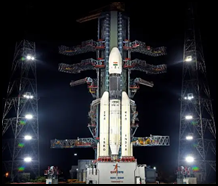
Chandrayaan-1
- Launched on October 22, 2008, Chandrayaan-1 was India’s first mission to the Moon.
- It orbited the Moon, deployed the Moon Impact Probe, and performed high-resolution mapping and mineralogical studies.
- Chandrayaan-1 confirmed the presence of water molecules at the lunar poles and marked India's entry into deep space exploration.[8]
Chandrayaan-2
- Launched on July 22, 2019, Chandrayaan-2 comprised an orbiter, lander (Vikram), and rover (Pragyan).
- Although the lander did not achieve a soft landing, the mission was a success in terms of scientific data collection and technological advancements.
- The mission expanded India’s lunar capabilities and scientific research.[9]
Chandrayaan-3
- Launched on July 14, 2023, Chandrayaan-3 marked a historic achievement for India as it successfully landed near the Moon's south pole.
- This mission made India the first country to achieve a soft landing in this region, which is of great scientific interest due to its permanently shadowed craters that may contain water ice.
- The lander (Vikram) and rover (Pragyan) successfully explored the surface, conducting thermal, seismic, and chemical analyses.
- Chandrayaan-3 made India the first country to land on the lunar south pole and furthered scientific knowledge of lunar soil and the environment.[10]
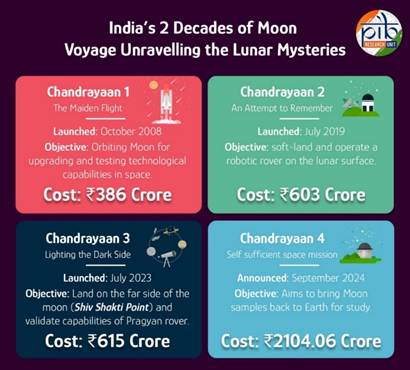
Chandrayaan-4
- Building on the success of Chandrayaan-3, Chandrayaan-4 will have a 9,200 kg satellite, this mission will involve sample collection and further experiments on the Moon's south pole.
- The mission's complexity and scale highlight India's growing capabilities in lunar exploration.
- Due to its size, it will be launched in two Mark III rockets, assembled in five modules with two stacks.
- These modules will dock in Earth's orbit, where the propulsion system will be separated. Four modules will travel to the Moon's orbit, with two eventually landing on the surface.
- The sample return module will only return to Earth, docking with the other two modules in lunar orbit.
Next Generation Launch Vehicles (NGLV)
ISRO's development of the Next Generation Launch Vehicles (NGLV) represents a major leap in space exploration capabilities. Unlike previous expendable launch vehicles, which were designed for a single use, the new vehicle introduces a groundbreaking feature, the recovery and reuse in the first stage.
- The next-generation launch vehicle under development will have a staggering 30,000 kg payload capacity to LEO, marking a 1,000-fold increase from the SLV 3.
- This 1,000-tonne lift-off mass vehicle will stand 93 meters tall and feature three stages, supported by two solid strap-on boosters, each with 190 tonnes of propellant.
- The first stage will be powered by nine engines, each producing 110 tonnes of thrust with a propellant load of 475 tonnes.
- The second stage will feature two engines, while the upper C32 cryogenic stage will use a liquid oxygen and liquid hydrogen propellant combination.
Mangalyaan (Mars Orbiter Mission)
Mars Orbiter Mission (MOM), India's first interplanetary mission to planet Mars was launched onboard PSLV-C25 on November 05, 2013. ISRO has become the fourth space agency to successfully send a spacecraft to Mars orbit. Though the designed mission life is 6 months, MOM completed 7 years in its orbit on Sept 24, 2021.[11]
The Mangalyaan spacecraft successfully entered Mars orbit on September 23, 2014, making ISRO only the first Asian and the fourth country in the world to do so and it achieved this feat with unparalleled cost-effectiveness. [12]

Mission objectives include:
One of the main objectives of the first Indian mission to Mars is to develop the technologies required for design, planning, management and operations of an interplanetary mission. Following are the major objective of the mission.
Technological objectives
- Design and realisation of a Mars orbiter with a capability to survive and perform Earth bound manoeuvres, cruise phase of 300 days travel, Mars orbit insertion/capture and on-orbit phase around Mars.
- Deep space communication, navigation, mission planning and management.
- Incorporate autonomous features to handle contingency situations
Scientific objectives
- Exploration of Mars surface features, morphology, topography, mineralogy and Martian atmosphere by indigenous scientific instruments.
- Scientific payloads onboard MOM continues to provide valuable data of Mars surface and its atmosphere. Mars Color Camera has captured more than 500 images of the Martian surface.
- It has provided excellent opportunities in planetary research for the scientific community of the country. [14]
NavIC (Navigation with Indian Constellation)
NavIC is a satellite based navigational system, developed by Indian Space Research Organization (ISRO), which enables users to determine their precise geographic location and track their movements anywhere in India and 1500 kms beyond India’s territorial boundary.[15] NavIC can help in navigation on land, air, sea and also in disaster management. NavIC satellites are placed in geostationary orbit (GEO) & geosynchronous orbit (GSO) with an altitude of about 36,000 km; GPS satellites are placed in medium earth orbit (MEO) with an altitude of about 20,000 km.[16]
Other Historic Milestones
India's space program is not just about exploration; it is also about leveraging space technology for national development. Satellites play a crucial role in various sectors, including agriculture, urban planning, and disaster management. The use of satellite data for groundwater monitoring under the Jal Shakti water conservation program is a prime example of how space technology is being used to address critical issues on Earth.
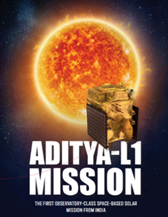
- Aditya L-1: India’s first solar mission, Aditya L-1 was launched in 2017 and aimed at studying the Sun from an orbit around the Sun-Earth Lagrangian point 1 (L1) which is about 1.5 million kilometres from the Earth.[17] In February 2025, The Solar Ultraviolet Imaging Telescope (SUIT) onboard Aditya-L1 captured an unprecedented view of a powerful solar flare ‘kernel’ in the lower solar atmosphere, namely the photosphere and the chromosphere.[18]
- Space Docking and Servicing: SpaDeX demonstrated India's capability in docking, undocking, refuelling, and payload transfer, which are essential for a self-sustained space station. On January 16th, 2025, India became the fourth country to successfully carry out a satellite docking process in Low Earth Orbit (LEO). In a very complex procedure, two 20 kg satellites, initially separated with a distance of 11 to 12 km, docked after precise control and measurement. Starting in March 2025, a series of experiments will be conducted to refine the process. In addition, approval has been granted for the development of a five-module space station, with the first module slated for launch in 2028.
- Orbital Re-entry Vehicle: ISRO is developing a winged body Orbital Re-entry Vehicle (ORV), which will be launched into orbit using an ascent vehicle and subsequently re-enter into the earth’s atmosphere for an autonomous approach & landing on a runway.
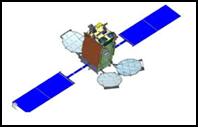
- Geo-Stationary Satellite (GSAT)-N2-High-Capacity Communication Satellite: GSAT-N2 became operational in January 2025, following its successful launch aboard a Falcon-9 rocket. Designed to provide high-throughput communication services, the satellite delivers up to 48 Gbps of capacity across India's mainland and islands. GSAT-N2 supports broadband access, digital platforms, e-learning, and emergency communications. The project was executed by NewSpace India Limited (NSIL), marking India's increased reliance on commercial partnerships for strategic satellite operations.[19]
- Mission Shakti: In March 2019, Defence Research and Development Organisation (DRDO) successfully conducted an Anti-Satellite (A-SAT) missile test ‘Mission Shakti’ from the Dr AP J Abdul Kalam Island in Odisha. A DRDO-developed Ballistic Missile Defence (BMD) Interceptor Missile successfully engaged an Indian orbiting target satellite in Low Earth Orbit (LEO) in a ‘Hit to Kill’ mode. The interceptor missile was a three-stage missile with two solid rocket boosters. Tracking data from range sensors has confirmed that the mission met all its objectives. The test has demonstrated the Nation’s capability to defend its assets in outer space.[20]
India’s Debris Free Space Missions (DFSM) initiative
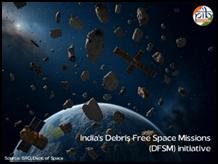
Announced by ISRO in April 2024, the initiative aims for all Indian space missions, governmental and non-governmental to be debris-free by 2030. The Debris-Free Space Missions (DFSM) framework sets stringent guidelines to prevent orbital debris generation, specifically targeting the urgent need to counter the proliferation of debris and mitigate the cascading effect created due to collisions, also known as the Kessler syndrome.
Space debris management is another critical area of focus for ISRO. The Space Situational Awareness (SSA) program monitors and manages space debris, with strategies for debris removal and satellite repositioning to ensure the long-term sustainability of space activities.
The DFSM mandates over 99% success in post-mission disposals through controlled re-entry or prompt de-orbiting and emphasizes safety, especially in human spaceflight orbital bands. The initiative encourages international cooperation, data sharing, and research on debris mitigation, with implementation starting in 2025 and annual progress reviews led by ISRO’s IS4OM (ISRO System for Safe & Sustainable Operations Management). By championing DFSM, India reinforces its commitment to a safe, secure, and sustainable outer space for future generations.
International Collaborations:
- Missions like NISAR (with NASA) and Shukla’s participation in Ax-4 highlight India’s growing role in international space partnerships. The mission is for global monitoring of ecosystems, ice mass and natural hazards.
- ISRO is working with CNES (French National Space Agency) for realizing a joint satellite mission named ‘TRISHNA (Thermal Infrared Imaging Satellite for High Resolution Natural Resource Assessment)’, which is in the initial stages.
- ISRO and JAXA (Japan Aerospace Exploration Agency), for the Lunar Polar Exploration Mission (LUPEX). The LUPEX mission will feature a rover weighing 250 kg, a substantial increase compared to the 25 kg rover from Chandrayaan-3.
- The European Space Agency (ESA) recently launched its Proba-3 mission aboard ISRO's PSLV rocket. This mission aims to study the Sun's outer atmosphere and is a testament to the growing partnership between India and Europe in space exploration.
Starlink Satellite Communications Pvt. Ltd (SSCPL), a wholly owned subsidiary of SpaceX, aims to provide high-speed, reliable, low-latency broadband via low Earth orbit satellites globally. Initially, Starlink plans to operate gateway sites at Mumbai, Pune, and Indore, expanding later to Nashik, Nagpur, Kolhapur, Hyderabad, and Bengaluru. In March 2025, Airtel and Reliance Jio partnered with Starlink to enhance satellite internet access in remote Indian areas, with Starlink also offering direct services. On June 6, 2025, SSCPL received a Unified License from DOT authorizing GMPCS, Commercial VSAT, and ISP-'A' services nationwide. IN-SPACe granted approval on July 8, 2025, for provisioning Starlink Gen#1 satellite constellation capacity in India for five years, with Gen#2 approval pending full operation. This capacity aims to connect underserved regions, support low-latency applications, IoT, and cellular backhauling.
Policy, Investment and Private Sector Growth
- 100% FDI: Under the amended FDI policy, 100% FDI is allowed in space sector. The liberalized entry routes under the amended policy are aimed to attract potential investors to invest in Indian companies in space. The entry route for the various activities under the amended policy are as follows:
- Upto 74% under Automatic route: Satellites-Manufacturing & Operation, Satellite Data Products and Ground Segment & User Segment. Beyond 74% these activities are under government route.
- Upto 49% under Automatic route: Launch Vehicles and associated systems or subsystems, Creation of Spaceports for launching and receiving Spacecraft. Beyond 49% these activities are under government route.
- Upto 100% under Automatic route: Manufacturing of components and systems/ sub-systems for satellites, ground segment and user segment.[21]
- India Space Policy 2023: In pursuance of the vision set out for the space sector, the India Space Policy was launched to pursue a holistic approach by encouraging and promoting greater private sector participation in the entire value chain of the Space Economy, including in the creation of space and ground based assets.[22]
- Space Vision 2047: India’s long-term roadmap includes the BAS, lunar landings, next-generation launch vehicles, and missions to Venus, all underpinned by the Space Vision 2047 strategy.[23]
- Central Public Sector Enterprises in the Space sector-
- Antrix Corporation Limited: ACL is ISRO’s commercial arm established in 1992, markets India’s space products and technologies globally. It offers end-to-end satellite solutions, launch services, remote sensing data and consultancy to international clients.[24]
- NewSpace India Limited (NSIL): NSIL is the commercial arm of ISRO, promotes and commercializes Indian space products and services while enabling Indian industries to undertake high-tech space activities, leveraging ISRO’s expertise and heritage.[25]
- In-SPACe: IN-SPACe, established in June 2020 as an autonomous nodal agency under the Department of Space, serves as a single-window facilitator for private sector participation in all space activities. It promotes, authorizes, and supervises non-government entities in building launch vehicles, satellites, and providing space-based services. [26]
- Growing Investments and Mission Success
- Over the last 11 years, ISRO has completed 100 space launch missions.
- Budget: The space budget has nearly tripled over the past decade from 5,615 crores in 2013-14 to 13,416 crores in 2025-26, reflecting strong government commitment.[27]
- The SpaDeX (Space Debris Experimental) Mission is a new initiative to address the rising challenge of space debris in Earth’s orbit.
- Reforms and Innovation: The opening of the space sector to private players, establishment of a dedicated venture capital fund, and new policies have fostered a vibrant ecosystem, catalyzing innovation and job creation.[28]
- 328+ space startups have emerged in recent years.
- These startups are playing a crucial role in expanding India’s space innovation ecosystem, working alongside ISRO and other partners.
Way Forward
Following missions are planned in 2025:
- PSLV-C61/EOS-09 Mission: PSLV will launch EOS-09, a state-of-the-art microwave remote sensing satellite with a C-band synthetic aperture radar, capable of imaging surface features day and night in all weather.
- TV-D2 Mission: The second Test Vehicle mission will demonstrate Gaganyaan Crew Escape System by simulating an abort scenario. The Crew Module will separate and descend using thrusters and parachutes before sea splashdown, followed by recovery operations.
- GSLV-F16/NISAR Mission: The NASA-ISRO NISAR Earth science satellite, using dual L & S band RADAR, will monitor Earth's ecosystems and hazards. ISRO provides the satellite bus, integration, testing, launch vehicle, and S-band payload; NASA supplies the L-band payload, antenna, recorder, and GPS.
- LVM3-M5/BlueBird Block-2 Mission: A commercial launch for AST SpaceMobile Inc., USA, of BlueBird Block-2 satellites under agreement with NSIL.
Additionally, upcoming scientific missions include the Venus mission, Mars Orbiter Mission, Chandrayaan-4, and Chandrayaan-5. ISRO is also focusing on satellites for communication, navigation, disaster mitigation, and resource monitoring. Building a space station for experiments and a gateway for interplanetary exploration, including landing Indians on the Moon, is a key goal.
Conclusion
India’s space programme stands at a defining moment in its history, as it transitions from a journey of exploration to a mission of leadership. Group Captain Shubhanshu Shukla’s pioneering role aboard Axiom Mission 4 is more than a personal milestone, it is a national triumph that reflects India’s evolving capabilities and global stature in space science. Through cutting-edge research, strategic partnerships, and a robust vision encapsulated in initiatives like Gaganyaan and the Bharatiya Antariksh Station, India is laying the groundwork for a sustained human presence in space. The convergence of policy reforms, private sector participation, and technological ambition ensures that the space sector will not only drive scientific progress but also fuel innovation and economic growth. As India prepares for its first independent human spaceflight and ventures towards the Moon and beyond, it signals to the world that the future of space will be shaped by nations that dare to dream and have the resolve to act, and India is firmly among them.
References:
Department of Space:
Ministry of Science and Technology:
PIB Backgrounders:
Cabinet:
Vice-President’s Secretariat:
ISRO:
Indian Space Science Data Center:
Ministry of Education:
Axiom Space:
Ministry of Defence:
Ministry of Commerce & Industry
Indian National Space Promotion and Authorization Centre:
Click here for pdf file
***
SK/RT/AKS
(Backgrounder ID: 154955)
आगंतुक पटल : 10817
Provide suggestions / comments
इस विज्ञप्ति को इन भाषाओं में पढ़ें:
हिन्दी